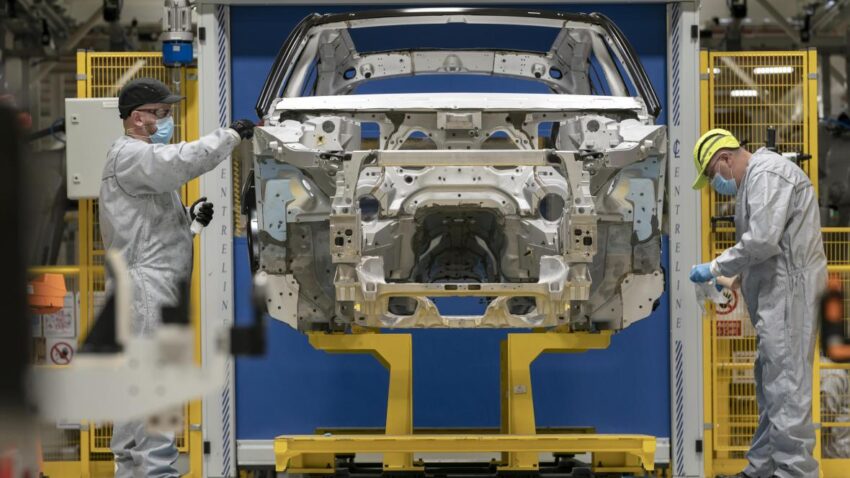Aston Martin is back on the road and set to hit its income targets for the year, according to its executives, but it remains stubbornly lossmaking at the bottom line.
On the back of a first full calendar year of sales of the £150,000 DBX, Aston’s rival to the Range Rover, and the sorting out of showroom blockages of the sale of its £120,000 Vantage sports cars, the group more than trebled its volumes to 2,901 vehicles in the first six months of the year, sending revenues up by a similar factor to £498 million.
The positive news for a company that has specialised in bad news since its ill-starred £4.4 billion 2018 flotation continued the recent rally in London’s only listed carmaker. In morning trading the stock was up 47p to £19.29p to value the company at £2.2 billion. After drifting downwards during the summer, the shares have put on 12 per cent over the past fortnight.
After multiple refinancings since its flotation to prevent collapse to its eighth bankruptcy, the company, which has factories in Warwickshire and south Wales, is now controlled by Lawrence Stroll, a Canadian billionaire who is also bankrolling Aston’s revival in Formula 1 motor racing. Germany’s Mercedes-Benz automotive group Daimler also has a 20 per cent stake after providing the technology that will make Aston Martin cars increasingly plug-in electric from the middle of the decade.
The results in the first half of 2021 put it back above the pre-pandemic year of 2019.
Its ebitda earnings — operating profits before financing costs, depreciation accounting and taxes — came in at £49 million, which put it on target to hit its recalibrated full-year targets of 6,000 sales, £1 billion of revenues and about £150 million of ebitda.
However, at the bottom line it remains deeply in the red to the tune of £90 — albeit an improvement from the first half of 2020, when the number was £227 million. In 2019, the figure was a pre-tax loss of £80 million.
The improvement in 2021 was down to sales of 1,595 DBX, making up 55 per cent of all volumes, plus the unwinding of a crushing supply-demand mismatch for its sports cars, which meant it needed to slash prices and give incentives to dealers to clear the backlog of volumes. Back on an even keel, Aston has been able to double the number of sports car sales.
The company has mid-decade targets of volumes of 10,000, bringing in revenues of £2 billion and ebitda of £250 million.
Ken Gregor, the former Jaguar Land Rover finance director who is now doing the same job at Aston Martin, said the business will be sustainably bottom-line profitable at some time on the journey between now and then.
That will be helped by higher-margin products like the £2 million Valkyrie hypercar and the £580,000 plug-in hybrid Valhalla and the eventual relaunch of the Vanquish as a so-called mid-engine sports car to take on the likes of the Ferrari 488.
Stroll is personally bankrolling the Aston Martin F1 racing team in which his son Lance is one of the drivers. The small print in Aston Martin’s listed company accounts reveals that it pays the F1 team about £25 million a year for marketing rights, including providing Aston road cars to Lance Stroll and its other driver Sebastian Vettel.
